Photo

Unjust Accusations
The villagers found themselves labeled as insurgents and faced severe consequences. In reality, this was not a Christian revolt but an uprising of the Bashi-Bazouks. In any other country, such an event would have been rightly recognized as such. Aziz Pacha, previously regarded as sympathetic to the Bulgarians but since removed from his position, ignored the villagers’ pleas for protection. When the inevitable attack occurred, instead of coming to their aid, he led regular troops and artillery against them.
Betrayal and Bombardment
Aziz Pacha’s arrival at the village on Thursday afternoon marked the beginning of a tragic turn of events. Without issuing a surrender demand, he immediately initiated a bombardment, catching the villagers off guard with the sudden roar of cannons. While the Turks claim that a surrender summons was sent before the attack, the villagers vehemently deny this. Considering that the village had previously requested protection from Aziz Pacha three times, it seems unlikely that they would refuse to surrender when faced with regular troops Guided Turkey Tours .
Lack of Evidence
Efforts were made to gather evidence supporting the claim that a surrender summons was issued, but these attempts likely proved fruitless. Even the Turks themselves admitted to the villagers’ appeals for protection, undermining the credibility of any assertion that they refused to surrender. The undeniable truth is that when the artillery barrage began, the villagers, who had bravely prepared to defend their church, succumbed to panic. Despite their prior readiness and the church’s strategic position, they fled in desperation, abandoning their fortified refuge.
0 notes
Photo
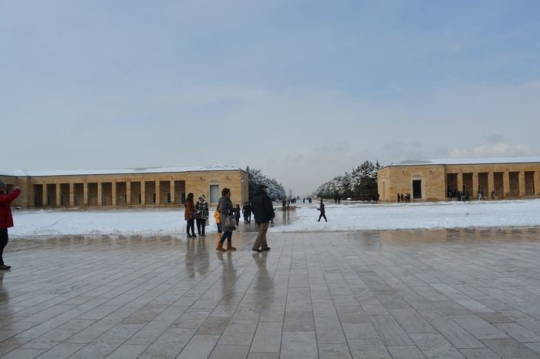
Exchange of Valuable Gifts
Sultan Mahmut I reciprocated the valuable throne received from Nadir Shah with a dispatch of highly valuable gifts. Among these gifts was the renowned “Topkapi Khanjar,” which was sent through the mission led by Kesriyeli Ahmet Pasha.
Sultan’s Decree for Mission
Upon the return of envoy Mustafa Nazif Efendi to Istanbul, he briefed Sultan Mahmut I about the gifts exchanged. In response, Sultan Mahmut I issued a decree assigning Kesriyeli Ahmet Pasha and his mission to Iran, accompanied by exceptionally valuable gifts described as unparalleled Istanbul Private Tours Mevlevi.
Detailed Account by Izzi Suleyman Efendi
Izzi Suleyman Efendi, the private historian to Sultan Mahmut I, provided a detailed account of the incident. He described how a committee was formed to determine the gifts to be sent in exchange for the highly valuable throne. Izzi elaborated on the evaluation process of treasury items, highlighting the meticulous procedures followed.
Evaluation and Documentation
The gifts earmarked for Iran were presented to the Sultan by a committee in the Audience Hall. Under the supervision of this committee, the Chief Jeweller of the Palace, Chief Doorkeeper of the Covered Market, and other officials evaluated the gifts and fixed their prices. A register was maintained for these gifts, and the Chief Doorkeeper of the Treasury was tasked with packaging them and sealing the envelopes under the oversight of the Grand Vizier.
Symbolic Commentary
In addition to documenting the evaluation process, the register book contained a noteworthy commentary emphasizing the symbolic significance of the priceless gifts. It likened these gifts to drops in the sea when compared to the grandeur and authority of the Ottoman State.
Through Izzi Suleyman Efendi’s detailed account, we gain insight into the meticulous procedures and symbolic significance associated with the exchange of valuable gifts during Sultan Mahmut I’s reign.
0 notes
Photo
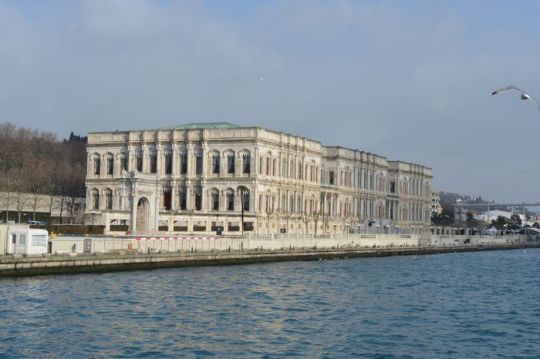
The Mysterious Bankovsky
The enigmatic figure known as Bankovsky remains shrouded in mystery, his true identity concealed behind a veil of secrecy. Despite efforts to uncover his origins, his real name remains elusive, though it is certain that he was Bulgarian.
Description and Influence
According to Raika, Bankovsky was a striking figure, tall and handsome, with a blonde mustache and piercing blue eyes. His commanding presence and fiery oratory skills captivated the villagers, swaying them with impassioned speeches. Under his influence, they unanimously resolved to revolt upon Servia’s declaration of war, which they anticipated with certainty.
The Need for a Symbol
Recognizing the power of symbolism, the insurgents understood that a flag would galvanize their cause and lend legitimacy to their rebellion. Raika, renowned for her needlework skills, was tasked with embroidering the standard of their uprising. Initially hesitant and aware of the dangers involved, she attempted to dissuade them. However, faced with determination and persuasion from the insurgents, she reluctantly agreed to undertake the task Tour Packages Bulgaria.
Tragic Consequences
To shield her family from potential repercussions, Raika decided to embroider the flag in the house of one of the insurgents, hoping to keep her involvement discreet. Unfortunately, this precaution proved futile. Her father, serving as a priest in the village church, fell victim to the Turkish massacre along with hundreds of others. The flag, now a grim reminder of the rebellion, serves as evidence in ongoing trials.
Symbol of Struggle
The flag, despite its tattered state, bears witness to the villagers’ fervent desire for liberty. Embroidered with a simple yet powerful design—a majestic yellow lion with its paw atop a crescent, symbolizing defiance against Ottoman rule—the flag bears the inscription “Liberty or death” in Bulgarian, embodying the villagers’ unwavering commitment to their cause.
Bankovsky’s influence and the symbolism of the embroidered flag underscore the complex dynamics of the rebellion in Panagurishti. Raika’s involvement, though reluctantly undertaken, tragically intertwines her fate with the unfolding events, highlighting the profound sacrifices made in the pursuit of freedom and independence.
0 notes
Photo

The Mysterious Bankovsky
The enigmatic figure known as Bankovsky remains shrouded in mystery, his true identity concealed behind a veil of secrecy. Despite efforts to uncover his origins, his real name remains elusive, though it is certain that he was Bulgarian.
Description and Influence
According to Raika, Bankovsky was a striking figure, tall and handsome, with a blonde mustache and piercing blue eyes. His commanding presence and fiery oratory skills captivated the villagers, swaying them with impassioned speeches. Under his influence, they unanimously resolved to revolt upon Servia’s declaration of war, which they anticipated with certainty.
The Need for a Symbol
Recognizing the power of symbolism, the insurgents understood that a flag would galvanize their cause and lend legitimacy to their rebellion. Raika, renowned for her needlework skills, was tasked with embroidering the standard of their uprising. Initially hesitant and aware of the dangers involved, she attempted to dissuade them. However, faced with determination and persuasion from the insurgents, she reluctantly agreed to undertake the task Tour Packages Bulgaria.
Tragic Consequences
To shield her family from potential repercussions, Raika decided to embroider the flag in the house of one of the insurgents, hoping to keep her involvement discreet. Unfortunately, this precaution proved futile. Her father, serving as a priest in the village church, fell victim to the Turkish massacre along with hundreds of others. The flag, now a grim reminder of the rebellion, serves as evidence in ongoing trials.
Symbol of Struggle
The flag, despite its tattered state, bears witness to the villagers’ fervent desire for liberty. Embroidered with a simple yet powerful design—a majestic yellow lion with its paw atop a crescent, symbolizing defiance against Ottoman rule—the flag bears the inscription “Liberty or death” in Bulgarian, embodying the villagers’ unwavering commitment to their cause.
Bankovsky’s influence and the symbolism of the embroidered flag underscore the complex dynamics of the rebellion in Panagurishti. Raika’s involvement, though reluctantly undertaken, tragically intertwines her fate with the unfolding events, highlighting the profound sacrifices made in the pursuit of freedom and independence.
0 notes
Photo

Struggling with Impartiality
My resolve to maintain impartiality in my investigation has swiftly evaporated, giving way to a rising tide of emotion. The horrors I’ve encountered defy judicial detachment. Some truths, upon realization, incite an angry surge of blood and provoke visceral reactions. Certain realities are too grotesque for calm scrutiny, evoking a visceral recoil and a refusal of the mind to dwell on them. These are the realities I’ve encountered in my investigation.
Overwhelmed by Horrors
My initial inquiries have already revealed more than enough to draw conclusions. The forthcoming statistical data from Mr. Baring and Mr. Schuyler will likely suffice. The admitted atrocities, acknowledged even by those sympathetic to the Turks and the Turks themselves, paint a grim picture. The burning of 60 or 70 villages, the slaughter of some 15,000 individuals, predominantly women and children, are staggering figures. The gruesome details of unspeakable acts perpetrated against women and defenseless children, relayed not just by Bulgarians but also by various consuls, German officials, Greeks, Armenians, priests, missionaries, and even Turks, render further investigation redundant Turkey Sightseeing.
Accepting the Grim Reality
Confronted with such widespread and corroborated horror, I find it unnecessary to delve deeper. The enormity and unanimity of the accounts leave little room for doubt or skepticism. The evidence is overwhelming, and the urgency to address these atrocities becomes paramount. Further investigation would only serve to exacerbate the anguish without significantly altering the grim reality that demands immediate attention and action.
0 notes
Photo

Struggling with Impartiality
My resolve to maintain impartiality in my investigation has swiftly evaporated, giving way to a rising tide of emotion. The horrors I’ve encountered defy judicial detachment. Some truths, upon realization, incite an angry surge of blood and provoke visceral reactions. Certain realities are too grotesque for calm scrutiny, evoking a visceral recoil and a refusal of the mind to dwell on them. These are the realities I’ve encountered in my investigation.
Overwhelmed by Horrors
My initial inquiries have already revealed more than enough to draw conclusions. The forthcoming statistical data from Mr. Baring and Mr. Schuyler will likely suffice. The admitted atrocities, acknowledged even by those sympathetic to the Turks and the Turks themselves, paint a grim picture. The burning of 60 or 70 villages, the slaughter of some 15,000 individuals, predominantly women and children, are staggering figures. The gruesome details of unspeakable acts perpetrated against women and defenseless children, relayed not just by Bulgarians but also by various consuls, German officials, Greeks, Armenians, priests, missionaries, and even Turks, render further investigation redundant Turkey Sightseeing.
Accepting the Grim Reality
Confronted with such widespread and corroborated horror, I find it unnecessary to delve deeper. The enormity and unanimity of the accounts leave little room for doubt or skepticism. The evidence is overwhelming, and the urgency to address these atrocities becomes paramount. Further investigation would only serve to exacerbate the anguish without significantly altering the grim reality that demands immediate attention and action.
0 notes
Photo
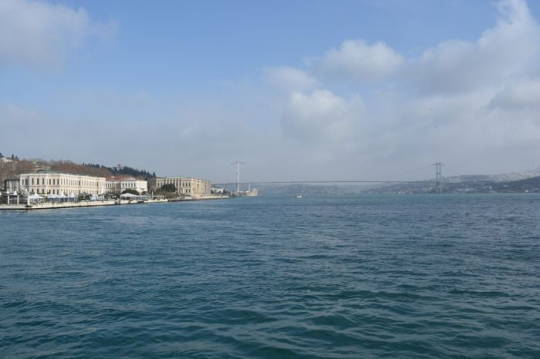
Soviet Influence and Systematic Imitation
Elections and Opposition Suppression
All “elections” in Bulgaria now mirror the Soviet model, where a single ballot list is presented by the Communist Party and government. Opposition is prohibited and treated as sedition, entirely resembling the Soviet electoral system.
Full-Scale Sovietization (Since 1947)
Bulgaria has undergone complete Sovietization. The Communists, in December 1947, introduced a constitution of their own making, with plans for a new one even more closely mirroring the Soviet Constitution. Every aspect of life is organized following the Soviet pattern, with the Communist Party being the sole source of power. The Party structure closely mimics the Soviet model, featuring a Central Committee, the Politbureau, and the Secretariat.
Alignment with Moscow’s Policies
The Bulgarian Communist Party consistently aligns its stance with Moscow’s directives. Notably, when Soviet publications praised Stalin as a “genius-like father of the nations,” Bulgarian Red newspapers echoed the same accolades. Similarly, as soon as the Soviet press denounced the “personality cult,” the Sofia press propagated the same message Guided Istanbul Tours.
Soviet-Inspired Administrative System (Since March 1959)
The administration of the country now operates through provincial, district, and city councils known as “People’s Soviets of the Workers,” resembling the administrative structure in the USSR. This system, introduced in March 1959, is a direct replication of the “decentralization” scheme implemented in the Soviet Union in December 1957.
Military Adherence to Soviet Practices
In the military, the Bulgarian Communists have adopted the divisional system used in the Soviet armed forces. Training methods mirror those of the Red Army, and weapons and equipment are of Soviet origin. The Bulgarian high command consists of Communists who spent their entire lives in the USSR, with many holding commissions in the Red Army during World War II.
0 notes
Photo
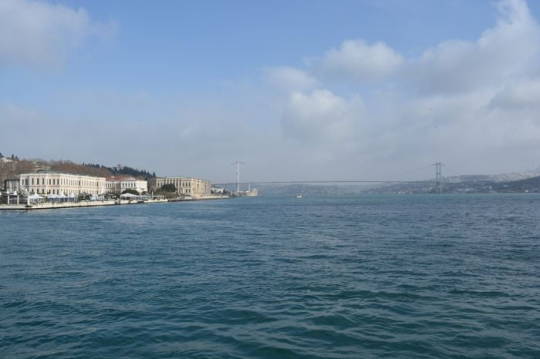
Soviet Influence and Systematic Imitation
Elections and Opposition Suppression
All “elections” in Bulgaria now mirror the Soviet model, where a single ballot list is presented by the Communist Party and government. Opposition is prohibited and treated as sedition, entirely resembling the Soviet electoral system.
Full-Scale Sovietization (Since 1947)
Bulgaria has undergone complete Sovietization. The Communists, in December 1947, introduced a constitution of their own making, with plans for a new one even more closely mirroring the Soviet Constitution. Every aspect of life is organized following the Soviet pattern, with the Communist Party being the sole source of power. The Party structure closely mimics the Soviet model, featuring a Central Committee, the Politbureau, and the Secretariat.
Alignment with Moscow’s Policies
The Bulgarian Communist Party consistently aligns its stance with Moscow’s directives. Notably, when Soviet publications praised Stalin as a “genius-like father of the nations,” Bulgarian Red newspapers echoed the same accolades. Similarly, as soon as the Soviet press denounced the “personality cult,” the Sofia press propagated the same message Guided Istanbul Tours.
Soviet-Inspired Administrative System (Since March 1959)
The administration of the country now operates through provincial, district, and city councils known as “People’s Soviets of the Workers,” resembling the administrative structure in the USSR. This system, introduced in March 1959, is a direct replication of the “decentralization” scheme implemented in the Soviet Union in December 1957.
Military Adherence to Soviet Practices
In the military, the Bulgarian Communists have adopted the divisional system used in the Soviet armed forces. Training methods mirror those of the Red Army, and weapons and equipment are of Soviet origin. The Bulgarian high command consists of Communists who spent their entire lives in the USSR, with many holding commissions in the Red Army during World War II.
0 notes
Photo
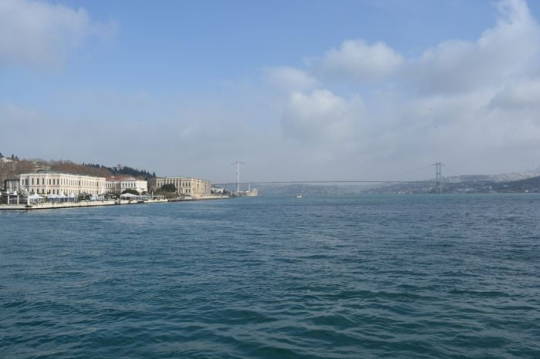
Soviet Influence and Systematic Imitation
Elections and Opposition Suppression
All “elections” in Bulgaria now mirror the Soviet model, where a single ballot list is presented by the Communist Party and government. Opposition is prohibited and treated as sedition, entirely resembling the Soviet electoral system.
Full-Scale Sovietization (Since 1947)
Bulgaria has undergone complete Sovietization. The Communists, in December 1947, introduced a constitution of their own making, with plans for a new one even more closely mirroring the Soviet Constitution. Every aspect of life is organized following the Soviet pattern, with the Communist Party being the sole source of power. The Party structure closely mimics the Soviet model, featuring a Central Committee, the Politbureau, and the Secretariat.
Alignment with Moscow’s Policies
The Bulgarian Communist Party consistently aligns its stance with Moscow’s directives. Notably, when Soviet publications praised Stalin as a “genius-like father of the nations,” Bulgarian Red newspapers echoed the same accolades. Similarly, as soon as the Soviet press denounced the “personality cult,” the Sofia press propagated the same message Guided Istanbul Tours.
Soviet-Inspired Administrative System (Since March 1959)
The administration of the country now operates through provincial, district, and city councils known as “People’s Soviets of the Workers,” resembling the administrative structure in the USSR. This system, introduced in March 1959, is a direct replication of the “decentralization” scheme implemented in the Soviet Union in December 1957.
Military Adherence to Soviet Practices
In the military, the Bulgarian Communists have adopted the divisional system used in the Soviet armed forces. Training methods mirror those of the Red Army, and weapons and equipment are of Soviet origin. The Bulgarian high command consists of Communists who spent their entire lives in the USSR, with many holding commissions in the Red Army during World War II.
0 notes
Photo
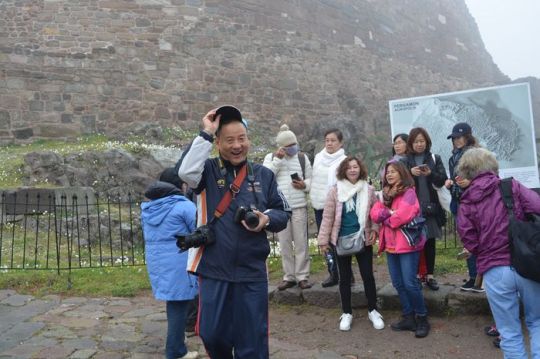
The Fall of Communism in Bulgaria November 10 1989
The Palace Coup of November 10, 1989
Assisted by the Soviet Embassy, the leadership of the Bulgarian Communist Party orchestrated significant changes within their ranks. On November 10, 1989, a party plenum released Todor Zhivkov from his position as General Secretary of the Central Committee. Zhivkov, feeling aged and weakened, opted not to engage in another strenuous battle for power.
Quote:
“Look at me – I march on.
Not with the swing and shiver of a victory march
Not along a route lined solemnly,
Not under a rain of flowers.”
Excerpt from ‘In Spite of Everything’ by Bogomil Rainov (b. 1919), translated by Roy MacGregor-Hastie
Subtitle 2: The Years of Democracy: 1990 and Beyond City Tours Istanbul.
Questioning 45 Years of Rule
The events of November 10, 1989, marked a “palace coup” orchestrated by the Communist Party leadership to retain control over state governance. This change was heavily influenced by the Soviet Union. Todor Zhivkov was replaced as the party leader and President of the State Council by Petar Mladenov, a Soviet-educated figure who had served as Foreign Minister and been a long-standing member of the Political Bureau of the Central Committee of the Bulgarian Communist Party (BCP). In January 1990, Andrei Loukanov, another Soviet-trained individual with a history as a minister and representative of the communist elite, assumed the position of Prime Minister. Both leaders emphasized that the Bulgarian “restructuring,” following the example of the Soviet “perestroika,” should focus on transforming and improving the existing system, and the process should be led by the Communist Party.
November 10, 1989, witnessed a significant shift in Bulgaria’s political landscape, as the Communist Party leadership executed a “palace coup,” paving the way for changes and opening the door to a new era of democracy.
0 notes
Photo

The Fall of Communism in Bulgaria November 10 1989
The Palace Coup of November 10, 1989
Assisted by the Soviet Embassy, the leadership of the Bulgarian Communist Party orchestrated significant changes within their ranks. On November 10, 1989, a party plenum released Todor Zhivkov from his position as General Secretary of the Central Committee. Zhivkov, feeling aged and weakened, opted not to engage in another strenuous battle for power.
Quote:
“Look at me – I march on.
Not with the swing and shiver of a victory march
Not along a route lined solemnly,
Not under a rain of flowers.”
Excerpt from ‘In Spite of Everything’ by Bogomil Rainov (b. 1919), translated by Roy MacGregor-Hastie
Subtitle 2: The Years of Democracy: 1990 and Beyond City Tours Istanbul.
Questioning 45 Years of Rule
The events of November 10, 1989, marked a “palace coup” orchestrated by the Communist Party leadership to retain control over state governance. This change was heavily influenced by the Soviet Union. Todor Zhivkov was replaced as the party leader and President of the State Council by Petar Mladenov, a Soviet-educated figure who had served as Foreign Minister and been a long-standing member of the Political Bureau of the Central Committee of the Bulgarian Communist Party (BCP). In January 1990, Andrei Loukanov, another Soviet-trained individual with a history as a minister and representative of the communist elite, assumed the position of Prime Minister. Both leaders emphasized that the Bulgarian “restructuring,” following the example of the Soviet “perestroika,” should focus on transforming and improving the existing system, and the process should be led by the Communist Party.
November 10, 1989, witnessed a significant shift in Bulgaria’s political landscape, as the Communist Party leadership executed a “palace coup,” paving the way for changes and opening the door to a new era of democracy.
0 notes
Photo
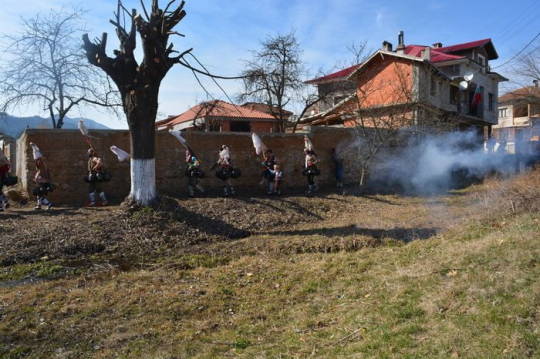
Current Struggles in Bulgarian Villages
The Perils of Daily Life
This article delves into the contemporary challenges faced by Bulgarian villagers, highlighting a pattern of systematic exploitation, pillaging, and abuse. From economic hardships to egregious assaults, the rural population grapples with a harsh reality that demands urgent attention.
A Stolen Livelihood
The first section exposes a troubling aspect of the villagers’ plight — the confiscation of their cattle and horses. This not only disrupts their means of livelihood but leaves them vulnerable to further exploitation. The article explores the ramifications of resisting this seizure, revealing a cycle of violence and oppression.
The Brutal Consequence
Examining the consequences of resistance, the article reveals a disturbing pattern of beatings and sabre attacks against those who dare to voice complaints or resist the pillaging of their possessions. This section sheds light on the harsh reprisals faced by villagers who attempt to stand up against the oppressors Bulgaria Tour.
Women as Targets
The narrative takes a harrowing turn as it exposes the blatant and open assaults on the dignity of women in these villages. Instances of women being seized and outrageously violated come to the forefront. The article emphasizes the urgent need to address this egregious violation of basic human rights.
Begging for Livelihood
A shift in focus to the economic struggles of villagers is highlighted as the article recounts a visit to Kritchina. Villagers from Tchanaktchi approached, desperately seeking financial assistance to repurchase their cattle from Turks who demanded payment for their return. This section underscores the economic coercion and desperation faced by the rural population.
Exploitation in Plain Sight
The plight of another village, unnamed but recognized by authorities, is unveiled. Villagers are only permitted to harvest their crops under the condition that half of the yield is surrendered to Turkish neighbors. This practice of economic exploitation, occurring within a short distance of Philippopolis, is dissected to expose the extent of the villagers’ economic subjugation.
Urgent Appeals for Intervention
The article concludes by emphasizing the urgency of addressing the multifaceted challenges faced by Bulgarian villagers. It calls for international intervention, advocacy, and a collective effort to curtail the ongoing abuses, ensuring that these rural communities are no longer subjected to economic extortion, violence, and assaults on their dignity.
A Call for Justice and Empowerment
In a final reflection, the article echoes the cries of the villagers, urging the global community to stand in solidarity, advocate for justice, and empower these communities to break free from the shackles of exploitation and abuse.
0 notes
Photo
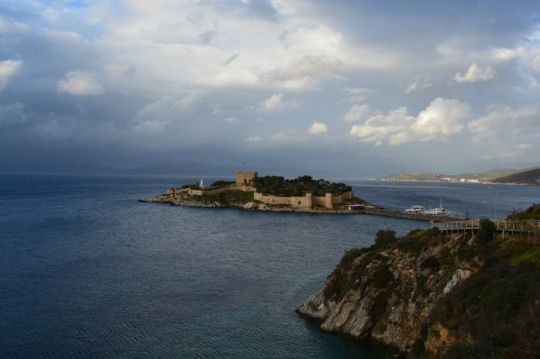
Unveiling Horrors
The Repulsive Realities of Otluk-kui’s Mudir
In the aftermath of the atrocities in Otluk-kui, a town plagued by unspeakable horrors, the figure of the Mudir emerges as a symbol of repulsion and brutality, leaving an indelible mark on the narrative of suffering.
Encountering the Brute The Sinister Presence of the Mudir
The morning following our arrival, the ominous presence of the Mudir cast a dark shadow over Otluk-kui. This Mudir, the same individual responsible for the horrifying maltreatment of a young schoolmistress, presented himself as a figure of unparalleled repulsiveness and filth. The sheer brutality witnessed in his actions marked him as one of the most repulsive brutes ever encountered.
Even the seasoned observer, Mr. Schuyler, could not hide his disdain. A brief exchange of words revealed a complete absence of compliments, prompting Mr. Schuyler to retreat to his room, leaving the Mudir to be entertained—or rather, tolerated—by the remaining occupants. Little did we know that the encounter with the Mudir was far from over, taking a peculiar and extraordinary turn Travel Bulgaria.
A Protracted Encounter Unveiling the Extraordinary Interview
What transpired during the extended interview with the Mudir bordered on the extraordinary, shedding light on the depth of his brutality and the extent of his repulsiveness. While Mr. Schuyler may have retreated physically, his investigation into the Mudir’s actions persisted, unraveling a narrative of horror that would shock even the most callous observers.
The details of this extraordinary interview, though not explicitly outlined, hinted at a continued exploration of the Mudir’s involvement in the atrocities that befell Otluk-kui. Mr. Schuyler, driven by a relentless pursuit of truth and justice, dug deeper into the sinister actions of this repulsive figure. The revelations, as they unfolded, served to expose not only the individual acts of brutality but also the systemic issues that allowed such repulsive conduct to persist.
As we navigate the unsettling truths uncovered in this extraordinary interview, the Mudir emerges not just as an individual brute but as a representation of the broader horrors inflicted upon Otluk-kui. The encounter with this repulsive figure becomes a pivotal moment in the ongoing quest for accountability, as the spotlight turns toward the complicity and responsibility of those in positions of authority. The town’s wounds, inflicted by both external invaders and internal perpetrators, remain open, and the Mudir stands as a chilling embodiment of the darkness that enveloped Otluk-kui during those harrowing days.
0 notes
Photo
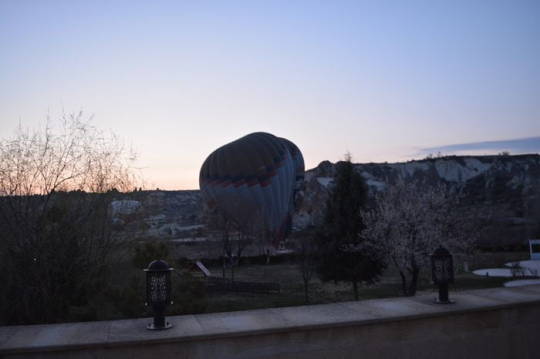
An angry manner
They barked at us in an angry manner, and then ran off into the adjoining fields. I observed nothing peculiar as we mounted, until my horse stumbled. When looking down I perceived he had stepped on a human skull partly hid among the grass. It was quite dry and hard, and might, to all appearances, have been there for two or three years, so well had the dogs done their work. A few steps further there was another, and beside it part of a skeleton, likewise white and dry.
As we ascended, bones, skeletons, and skulls became more frequent, but here they had not been picked so clean, for there were fragments of half-dry, half-putrid flesh still clinging to them. At last we came to a kind of little plateau or shelf on the hillside, where the ground was nearly level, with the exception of a little indentation where the head of a hollow broke through. We rode towards this, with the intention of crossing it, but all suddenly drew rein with an exclamation of horror, for right before us, almost beneath our horses’ feet, was a sight that made us shudder Guided Istanbul Tours.
Human body
It was a heap of skulls, intermingled with bones from all parts of the human body, skeletons, nearly entire, rotting, clothing, human hair, and putrid flesh lying there in one foul heap, around which the grass was growing luxuriantly. It emitted a sickening odour, like that of a dead horse, and it was here the dogs had been seeking a hasty repast when our untimely approach interrupted them.
In the midst of this heap I could distinguish one slight skeleton form still enclosed in a chemise, the skull wrapped about with a coloured handkerchief, and the bony ankles encased in the embroidered footless stockings worn by the Bulgarian girls. We looked about us.
The ground was strewed with bones in every direction, where the dogs had carried them off to gnaw them at their leisure. At the distance of a hundred yards beneath us lay the town. As seen from our stand-point, it reminded one somewhat of the ruins of Herculaneum or Pompeii.
0 notes
Photo
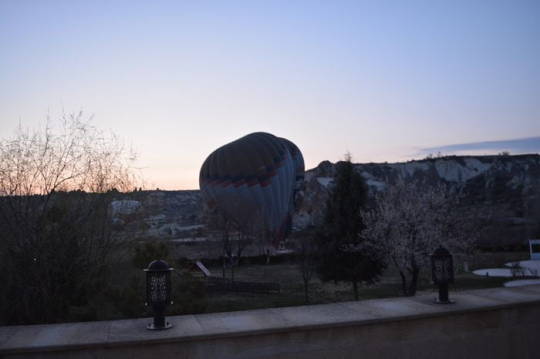
An angry manner
They barked at us in an angry manner, and then ran off into the adjoining fields. I observed nothing peculiar as we mounted, until my horse stumbled. When looking down I perceived he had stepped on a human skull partly hid among the grass. It was quite dry and hard, and might, to all appearances, have been there for two or three years, so well had the dogs done their work. A few steps further there was another, and beside it part of a skeleton, likewise white and dry.
As we ascended, bones, skeletons, and skulls became more frequent, but here they had not been picked so clean, for there were fragments of half-dry, half-putrid flesh still clinging to them. At last we came to a kind of little plateau or shelf on the hillside, where the ground was nearly level, with the exception of a little indentation where the head of a hollow broke through. We rode towards this, with the intention of crossing it, but all suddenly drew rein with an exclamation of horror, for right before us, almost beneath our horses’ feet, was a sight that made us shudder Guided Istanbul Tours.
Human body
It was a heap of skulls, intermingled with bones from all parts of the human body, skeletons, nearly entire, rotting, clothing, human hair, and putrid flesh lying there in one foul heap, around which the grass was growing luxuriantly. It emitted a sickening odour, like that of a dead horse, and it was here the dogs had been seeking a hasty repast when our untimely approach interrupted them.
In the midst of this heap I could distinguish one slight skeleton form still enclosed in a chemise, the skull wrapped about with a coloured handkerchief, and the bony ankles encased in the embroidered footless stockings worn by the Bulgarian girls. We looked about us.
The ground was strewed with bones in every direction, where the dogs had carried them off to gnaw them at their leisure. At the distance of a hundred yards beneath us lay the town. As seen from our stand-point, it reminded one somewhat of the ruins of Herculaneum or Pompeii.
0 notes
Photo

Hafiz Pacha unlike Achmet Aga
During the night and the next morning the troops and the Bashi-Bazouks entered the place, and then began a scene of pillage, violence, and massacre, only equalled by that of Batak. Neither age nor sex was spared. The town was pillaged, then fired ; about one-fourth of the houses were burnt, people were cut down in the streets, on their own doorsteps, on their own hearthstones. Old men and women begging for mercy, and children and infants screaming in terror, perished alike beneath the swift and certain sabre.
It is thought that 3,000 people were killed in this place alone, of whom about 400 were inhabitants of the town, and the rest from the neighbouring villages who had taken refuge here. But we were not greeted here with the scenes of horror that awaited us at Batak. Hafiz Pacha, unlike Achmet Aga, had sense enough to have the bodies buried within the following three days, and thus to cover up his tracks.
It has been repeated again and again that these acts were perpetrated by the Bashi-Bazouks ouly, and not by the regular troops ; and a great deal is made of the statement as showing the massacres were committed without the consent of the authorities. If the statement were worth anything, the converse ought to be true—that if the massacres were committed by the regular troops then the authorities are responsible. Now, as it happens, wherever there were any regular troops to commit massacres, they rivalled the Bashi-Bazouks in atrocity Turkey Sightseeing.
Here, as Mr. Schuyler will show in his report, regular and irregular troops were equally cruel, pitiless, and ferocious, and Hafiz Pacha is no less guilty than Achmet Aga. The reason is simple. They are all Turks alike, and there is nothing to choose between them. These massacres were committed by the order of the authorities, and that is why the men who committed them have been rewarded with decorations and promotions.
When we were in Panagurishti we were shown in the ruins of the church, before the place where the altar had stood, a black spot specked with calcined bones, on which lay a bouquet of flowers. This wras the remains of a priest, Theodor Peoff, 85 years of age, who had been seized and tortured in the hopes of obtaining money, mutilated and maltreated in ways which only the foul imagination of a Turk could invent, then killed, and burnt here before the altar.
0 notes
Photo

Hafiz Pacha unlike Achmet Aga
During the night and the next morning the troops and the Bashi-Bazouks entered the place, and then began a scene of pillage, violence, and massacre, only equalled by that of Batak. Neither age nor sex was spared. The town was pillaged, then fired ; about one-fourth of the houses were burnt, people were cut down in the streets, on their own doorsteps, on their own hearthstones. Old men and women begging for mercy, and children and infants screaming in terror, perished alike beneath the swift and certain sabre.
It is thought that 3,000 people were killed in this place alone, of whom about 400 were inhabitants of the town, and the rest from the neighbouring villages who had taken refuge here. But we were not greeted here with the scenes of horror that awaited us at Batak. Hafiz Pacha, unlike Achmet Aga, had sense enough to have the bodies buried within the following three days, and thus to cover up his tracks.
It has been repeated again and again that these acts were perpetrated by the Bashi-Bazouks ouly, and not by the regular troops ; and a great deal is made of the statement as showing the massacres were committed without the consent of the authorities. If the statement were worth anything, the converse ought to be true—that if the massacres were committed by the regular troops then the authorities are responsible. Now, as it happens, wherever there were any regular troops to commit massacres, they rivalled the Bashi-Bazouks in atrocity Turkey Sightseeing.
Here, as Mr. Schuyler will show in his report, regular and irregular troops were equally cruel, pitiless, and ferocious, and Hafiz Pacha is no less guilty than Achmet Aga. The reason is simple. They are all Turks alike, and there is nothing to choose between them. These massacres were committed by the order of the authorities, and that is why the men who committed them have been rewarded with decorations and promotions.
When we were in Panagurishti we were shown in the ruins of the church, before the place where the altar had stood, a black spot specked with calcined bones, on which lay a bouquet of flowers. This wras the remains of a priest, Theodor Peoff, 85 years of age, who had been seized and tortured in the hopes of obtaining money, mutilated and maltreated in ways which only the foul imagination of a Turk could invent, then killed, and burnt here before the altar.
0 notes